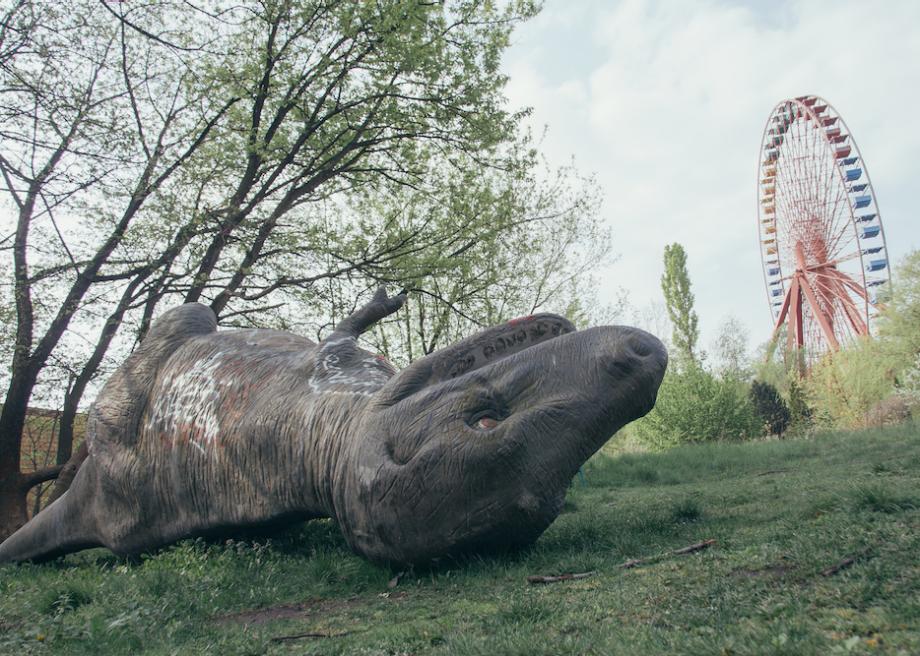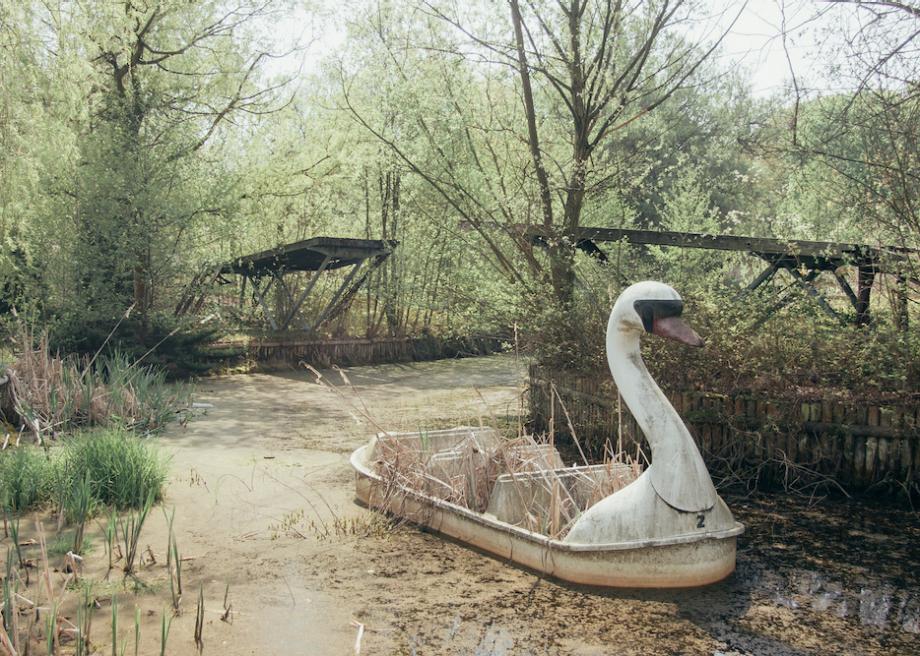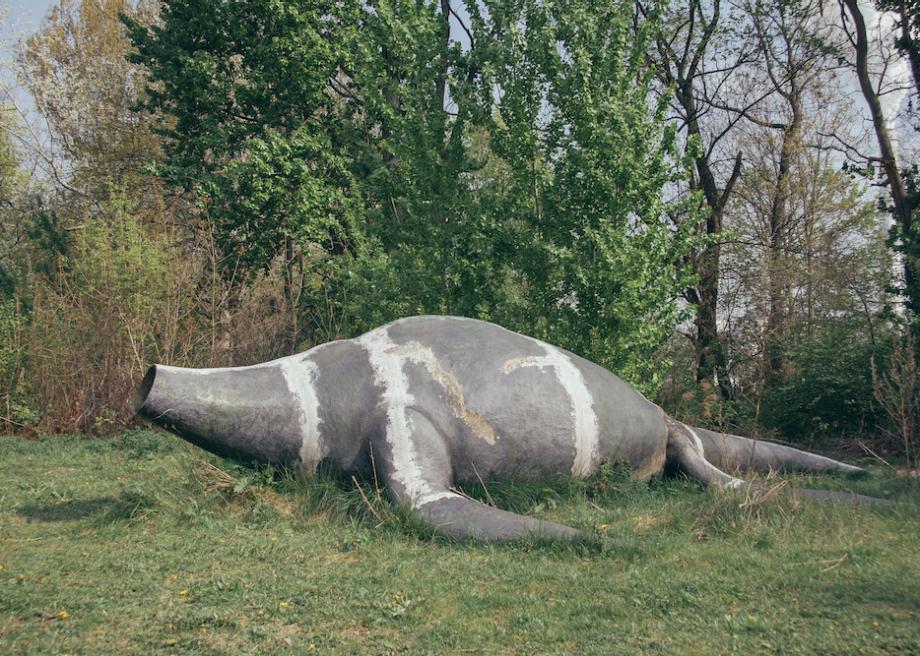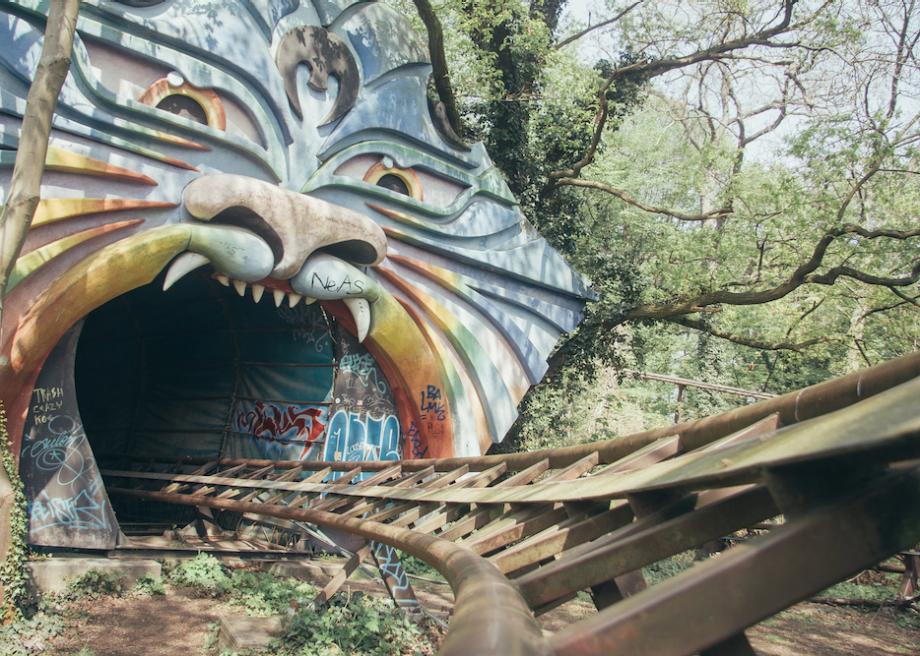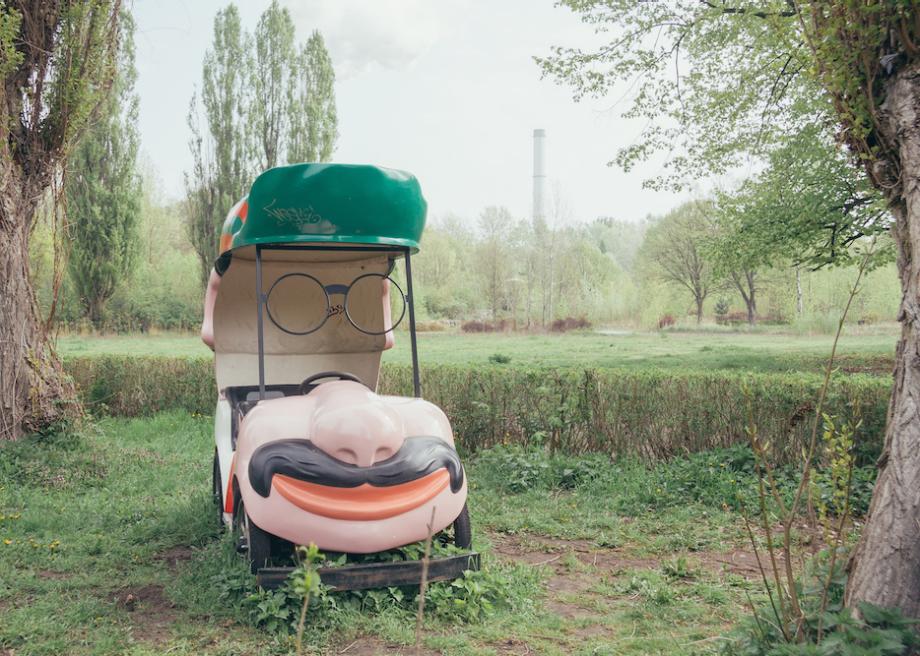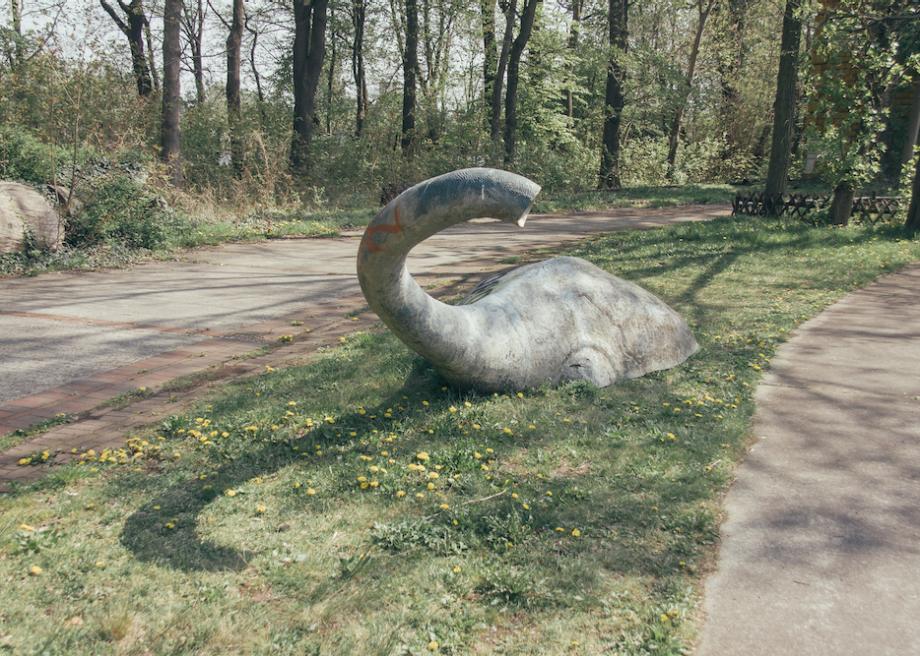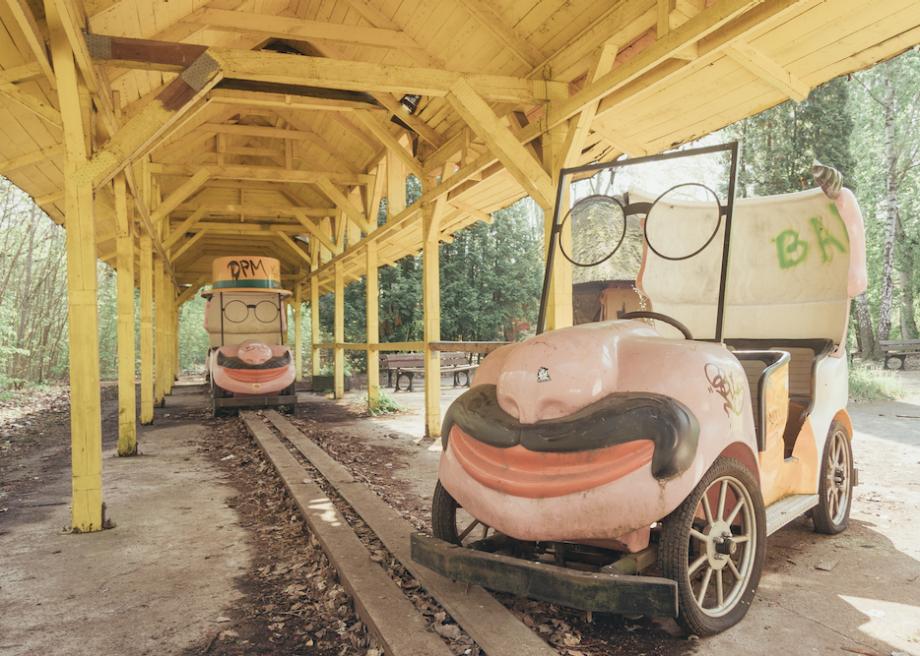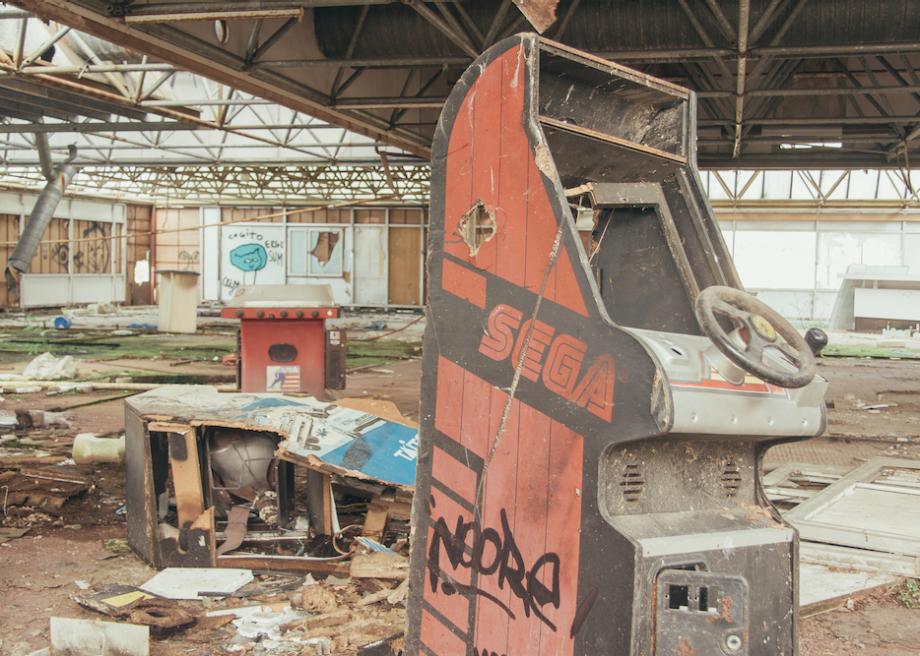A Fiery Farewell to Spreepark, Berlin's Beloved Abandoned Theme Park
Editor’s note, Sept. 18, 2014: The original version of this post contained material and phrases sourced from an exberliner.com article without proper acknowledgment of their origin. The original post did not meet Slate’s standards, and Slate and Atlas Obscura regret the error. The text has been revised and links have been added in order to properly credit the Exberliner writer, Rachel Glassberg.
Atlas Obscura on Slate is a blog about the world's hidden wonders. Like us on Facebook, Tumblr, or follow us on Twitter @atlasobscura.
Much to the dismay of urban explorers, forest ravers, and kings of carousels with dreams to build German Disneylands, the abandoned Berlin amusement park Spreepark is at the end of its era. Not only does 2014 mark the 25th anniversary of the fall of the Berlin Wall, but with it the fall of one of Berlin's most beloved former GDR pleasure palaces.
Just like the city it inhabits, Spreepark has seen it all over the ∂zlast quarter century—communism, the end of the Berlin Wall's divide, bankruptcy, drug trafficking, nature taking its hold, gentrification—and now, arson. In the early hours of Monday morning on August 11, Spreepark's "Old England" village, which makes up a significant chunk of the park, was burned down by delinquents who wanted to have one last hurrah on the rundown carousels before one of them went to jail the following day.
Built in Berlin-Treptow during the communist GDR government's spending spree of the 60s, Kulturpark Plänterwald, as it was called back then, remained a popular attraction until the Berlin Wall fell in 1989. The following year it was bought by Norbert Witte, the descendent of a German "carnie" family, and his wife, Pia, who dreamed of turning the revered state-owned amusement park of the former East into the biggest fairground in newly reunified Germany. After it reopened in 1991 as a 74-acre amusement park, their dreams initially came into fruition as Spreepark enjoyed an early outpouring of success, bringing in 1.5 million annual visitors.
Unfortunately the Witte family then stumbled into a Monopoly-esque "Do not pass go. Do not collect $200" predicament. As Rachel Glassberg reported in a 2013 article in Exberliner, the city scrapped 3,000 parking spaces in an effort to conserve the nearby Plänterwald forest. Ticket sales took a dive. In 2001 the Wittes declared insolvency. The park closed, and the family packed up their lives—six rides in tow—and moved to Peru for a fresh start.
Across the Atlantic, things went even more downhill in horrific rollercoaster-from-hell proportions. Desperate to recoup his finances after failing in his attempts to open a new theme park, and suffering multiple heart attacks, Norbert Witte and his son were arrested in 2003 when they attempted to smuggle 400 pounds of cocaine stuffed inside machinery of a "Flying Carpet" ride back into Germany. After spending a few years in a German prison, Norbert moved into a caravan on the grounds of the rundown amusement park. His son Marcel, however, remains in prison on the outskirts of Lima, Peru.
Since the Ferris wheel had its last spin over a decade ago, Mother Nature consumed the park, overturning its dinosaurs, sinking its log rides in swamps, and rusting its carousels and swan boats. Its post-apocalyptic aura caught Hollywood's eye in 2011, when it was used as a location for the action movie Hanna. That year, as Glassberg reported, “Sabrina and Pia [Norbert’s wife and daughter, respectively] opened a small café, Mythos, near Spreepark’s entrance and began conducting €15 tours of the grounds on weekends. That same year, they were able to re-open the Parkbahn, a festive mini-train that chugs along the park’s perimeter, charging €2 a ride.” Over the years, multiple potential investors expressed interest in acquiring the park[1] , but everything fell through. As a seemingly last resort, Spreepark was even put up for sale on eBay for $2.2 million in February 2014.
Spreepark's fate was finally decided in March 2014, when the Berlin government bought the lease to the land and ordered the Wittes to dismantle the dilapidated structures, hoping to restore the park to its former glory. There's no word yet on whether the fire will affect those plans. One thing's for sure though—Spreepark will leave behind a powerful legacy in the countless photos taken by explorers who made it through its fence over the last decade to explore Berlin's cherished "Neverland." Auf Wiedersehen, Spreepark!

